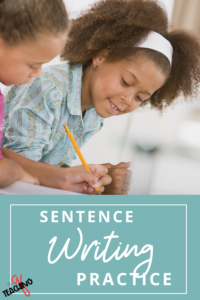Sentence writing is an essential skill for students during their early school years. So let’s discuss my trustworthy sentence practice routines.

The first step in mastering sentence writing is to identify a complete sentence. At this point, students should understand that a sentence has two parts, the subject, and the predicate.
The easiest and most simplified way of explaining the two parts are as follows;
To help bring this concept to life and add a little engagement, I like to write sentences on sentence strips. I then cut the sentence in half between the subject and the predicate. I then distribute the pieces of paper among the students. Their goal is to find another student to match up with, to form a complete sentence.
Challenge Activity- Pairs of students create the sentences, have the sentences checked by another pair. Then yet another partner set cuts the sentence strip between the subject and predicate. Upon completion, the class has a second round of the game to play. (Students love the opportunity to create sentences and fun for everyone!)
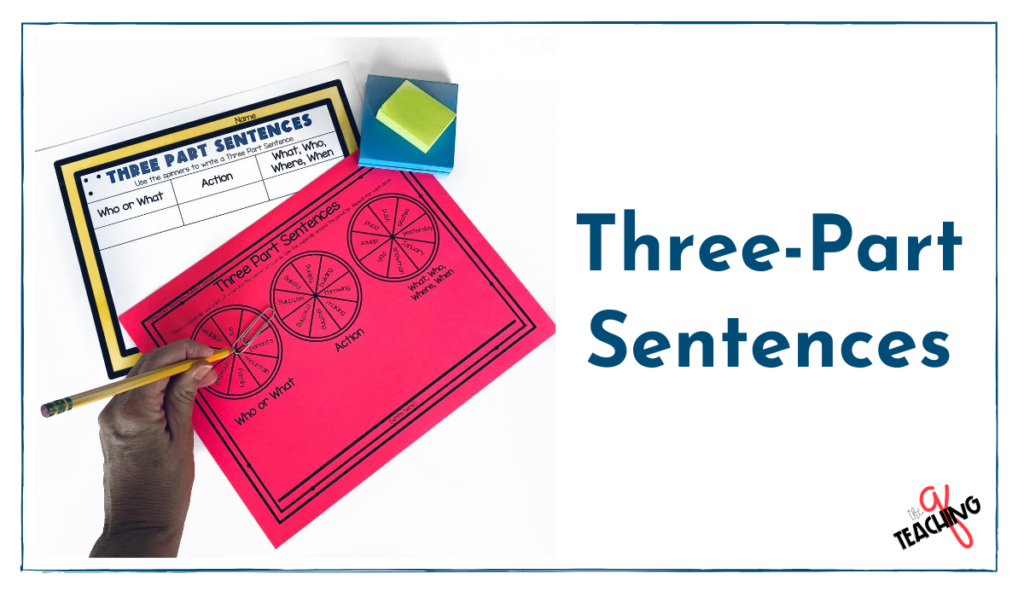
Once students are comfortable writing basic sentences, they can start using the Three-Part Sentence Structure to write more advanced sentences.
The Three-Part Sentence Structure begins with identifying a who or what. Then they determine an action. To give a little more detail, the student proceeds by deciding on a who, what, where, or when.
Students use the structure to expand their sentences within return, provide the needed details.
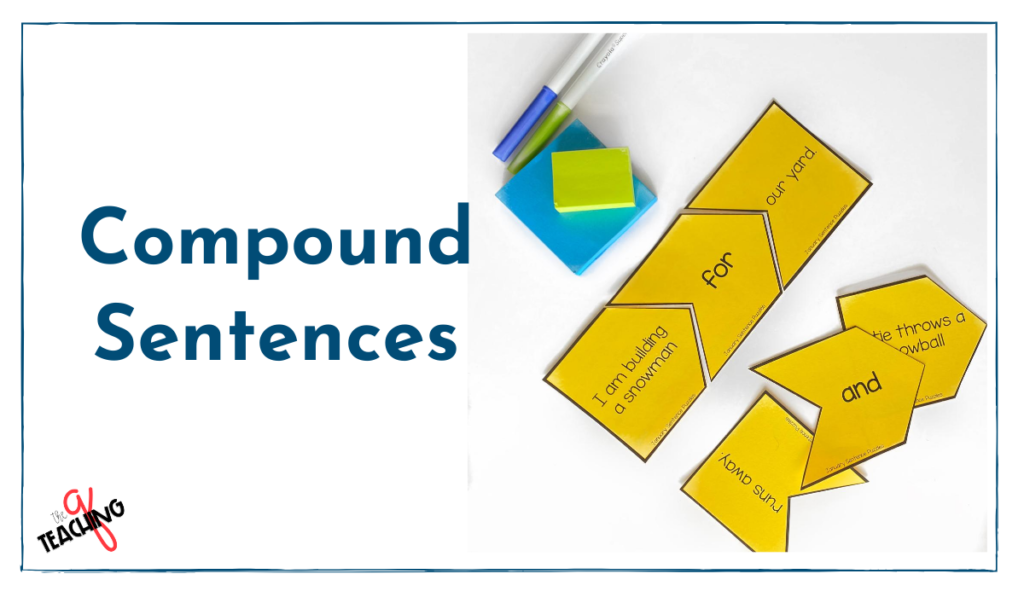
Now that students can write more advanced sentences, students will need to learn about compound sentences. Not only does this lesson provide students with a higher level of skill, but it also helps students correct the never-ending run-on sentences from occurring. (Yah, you know what I mean.)
For this skill, I rely heavily on the prepositions for, and, nor, by, or, yet, and so. In short, the acronym is FANBOYS.
To engage students, I read an informational piece of writing to the students. We then take notes on our learning from the text. I then ask for sentences that I might be able to write about the reading. At this point, I exaggerate the run-on sentences or the choppy basic sentences. As a class, we determine we can use FANBOYS to develop more sophisticated sentences.
Once the whole class has had the opportunity to write compound sentences, they are ready for a little practice. Often I provide a literature center of puzzle pieces in which groups of students may form compound sentences with the pieces.
As a challenging activity, students can see how many variations of sentences they can create. (Students love the friendly competition!)
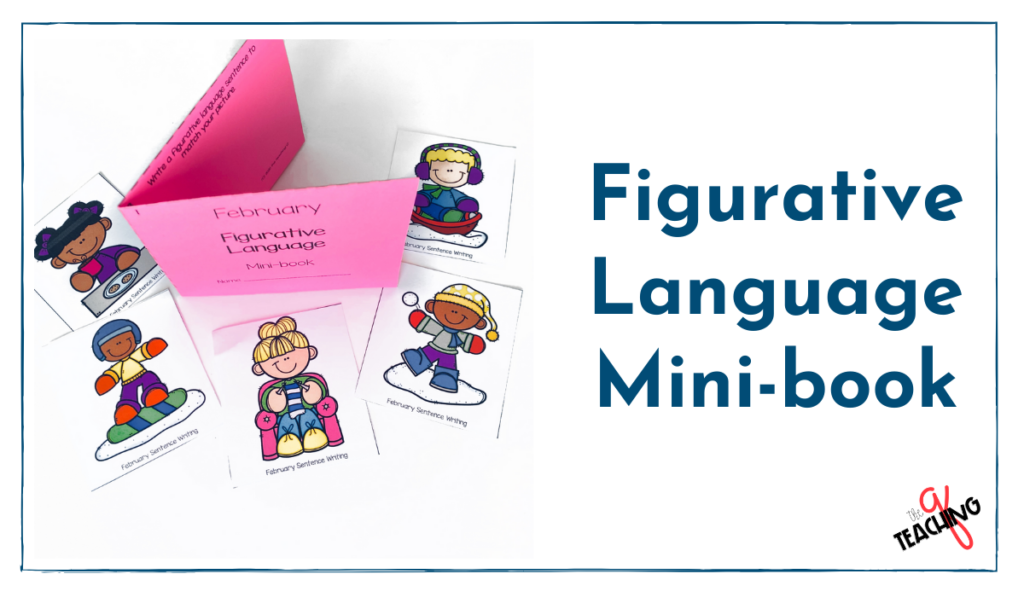
Adding details and descriptive language is always a fun lesson. I most definitely expose my students to using adverbs and adjectives to start. I then move into my student’s favorite activity is learning about figurative language. They especially love learning about onomatopoeia.
So to hook the students, we create mini figurative language books. Of course, I start with the big hook of teaching onomatopoeia. Right away, students are sucked into figurative language and want to learn more.
Also, my figurative langue mini-book continues by teaching analogies, similes, and metaphors.
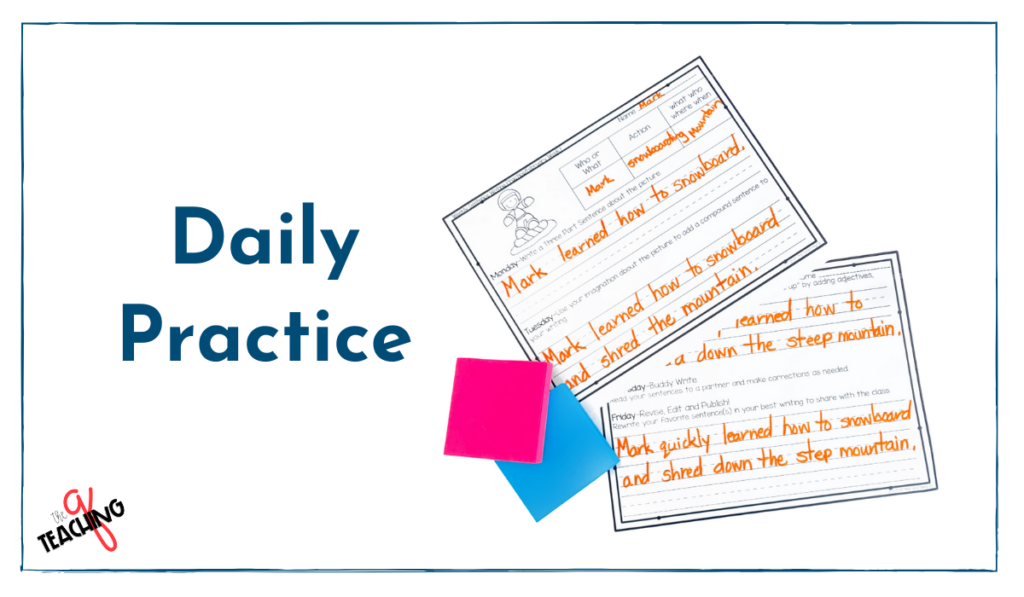
Now that the students have been taught and given time to apply their knowledge, I expect them to write sentences for practice independently.
Each week I provide my students with one worksheet paper with an assignment for each day of the week. Each of the days builds upon one another in complexity. Here’s an outline of the week’s assignments.
I use the above daily sentence writing structure as a literacy center activity. Students become familiar with the routine and never feel overwhelmed with the assignment since it is a small task.
To keep students interest, each week’s image is a small picture that relates to the month. Students are always eager to see the new picture.
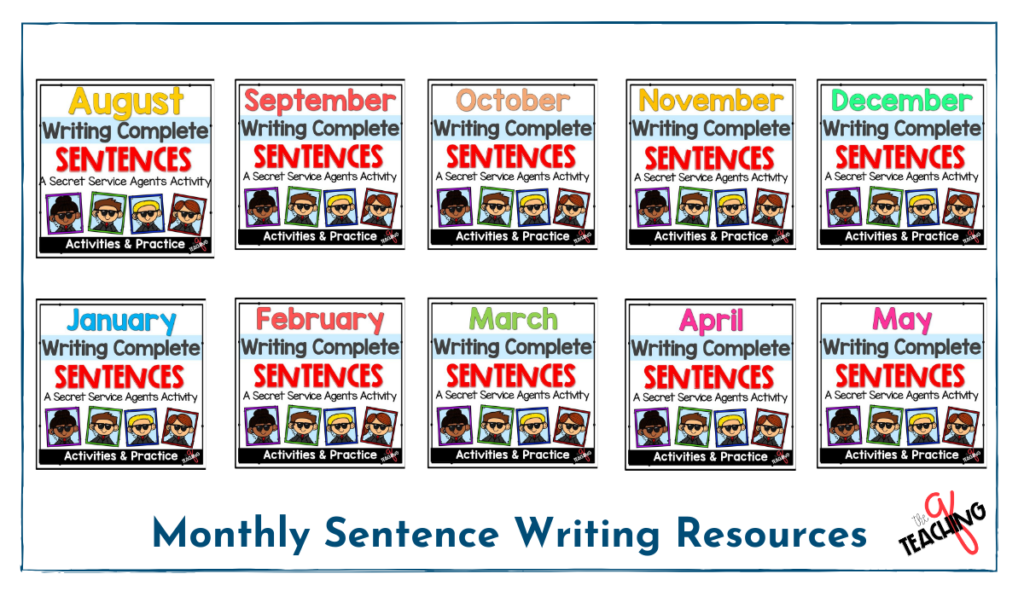
While we are on the subject of writing, make sure your students have a solid grasp of paragraph writing. Check out my FREE Structured Paragraph Handbook, which will guide you and your students through the steps needed to create the perfect paragraph.
If you are interested in my Monthly Sentence Writing resources, you can take a closer look at the BUNDLE here or click on the resource link provided below.
I also have the same resource in a digital format in Google Slides. I feel that students need opportunities to write with a paper-pencil and with the computer as well. So, I usually alternate between two versions each month.
You might like that approach too. Please note, though, it is the same resource in two formats. Below are the digital resource titles linked.
After your students have had adequate exposure to sentence writing, you may want to check out my post on Paragraph Writing here.
